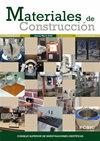利用工业废料合成白石熟料
IF 1.5
4区 工程技术
Q3 CONSTRUCTION & BUILDING TECHNOLOGY
引用次数: 6
摘要
研究了以造纸污泥、水泥窑灰、稻壳灰等工业废渣代替天然原料合成白石熟料的工艺。利用XRF、XRD和TG对废弃物进行了表征。配制不同的配方,在1300、1350和1400℃下生产熟料。用光学显微镜、XRD和乙二醇法对所制熟料进行了表征。最后,用等温微热法评价了所制水泥与熟料的水化作用。研究发现,在不使用天然原料的情况下,将纸泥、水泥窑灰和稻壳灰混合,在1350℃~ 1400℃的熟料温度下,可以得到f-CaO含量低于0.5%的白石熟料。研究发现,这些水泥具有较高的水化动力学,远高于普通硅酸盐水泥的水化动力学,这主要是由于所获得的熟料中非晶相的含量。本文章由计算机程序翻译,如有差异,请以英文原文为准。
Use of industrial wastes for the synthesis of belite clinker
The synthesis of belite clinker was studied using industrial wastes: paper sludge, cement kiln dust and rice husk ashes, as substitutes for natural raw materials. Wastes were characterized by XRF, XRD and TG analysis. Different formulations were prepared to produce clinker at 1300, 1350 and 1400 °C. The clinker obtained was characterized using optical microscopy, XRD and f-CaO content determined by ethylene glycol method. Finally, the hydration of prepared cements with the clinkers was evaluated by isothermal microcalorimetry. It was found that by mixing paper sludge, cement kiln dust and rice husk ashes, it is possible to obtain belite clinker with f-CaO content below 0.5%, in clinkering temperatures between 1350 °C and 1400 °C without the use of natural raw materials. It was found that these cements have a high hydration kinetic, far above the rate of Ordinary Portland Cement, due mainly by the amorphous phase content in clinkers obtained.
求助全文
通过发布文献求助,成功后即可免费获取论文全文。
去求助
来源期刊

Materiales de Construccion
工程技术-材料科学:综合
CiteScore
3.20
自引率
9.50%
发文量
38
审稿时长
>12 weeks
期刊介绍:
Materiales de Construcción is a quarterly, scientific Journal published in English, intended for researchers, plant technicians and other professionals engaged in the area of Construction, Materials Science and Technology. Scientific articles focus mainly on:
- Physics and chemistry of the formation of cement and other binders.
- Cement and concrete. Components (aggregate, admixtures, additions and similar). Behaviour and properties.
- Durability and corrosion of other construction materials.
- Restoration and conservation of the materials in heritage monuments.
- Weathering and the deterioration of construction materials.
- Use of industrial waste and by-products in construction.
- Manufacture and properties of other construction materials, such as: gypsum/plaster, lime%2
 求助内容:
求助内容: 应助结果提醒方式:
应助结果提醒方式:


